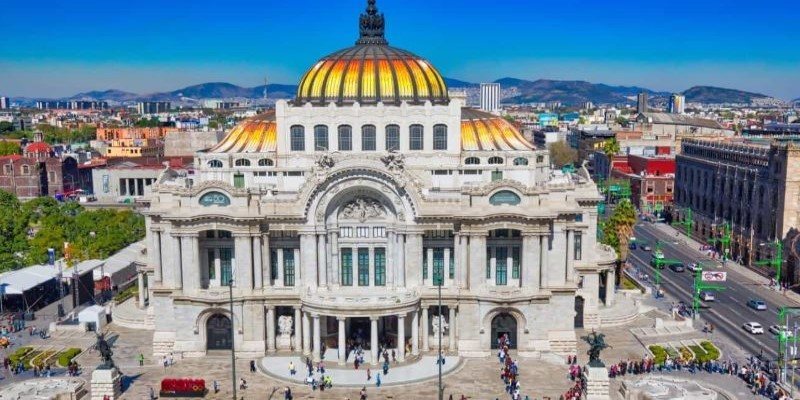London is often described as one of the most powerful cities in the world- a city that seamlessly fuses history and modernity. Its rich cultural heritage, excellent institutions, and people diversity make it a model city that others should emulate. More than the famous Big Ben or London Eye, London provides valuable lessons that can benefit other cities in the world. These are not about its world-famous tourist attractions or cultural exports but about how it manages everyday matters like transportation, urban planning, and social integration.
5 Ways London Inspires the World
In this article, we'll look at 5 key things the world can learn from London, which is how its successes and practices can inspire change in cities worldwide.
The Power of Diversity in Shaping Society
One of the most distinctive features of London is the cultural diversity that is exhibited by people from all walks of life, backgrounds, and countries residing in the city. Diversity is thus reflected in every aspect of the city's culture, such as its restaurants, neighborhoods, festivals, and businesses. Actually, nearly one-third of London's population was born outside the UK, making it one of the most ethnically and culturally diverse cities in the world.

What the world can take away from London is how diversity strengthens a city. It loves its diversity to allow multiple cultures to blend. This diversity, it seems, isn't a reason for variety's sake, but it is rather part and parcel of this city. It feeds the creativity in the minds and makes way for new and innovative thoughts. Cities all over the world should use this approach to give more room for an effective society where differences can be celebrated rather than dreaded. By encouraging integration and giving equal opportunities to people from diverse backgrounds, London was able to build a kind of society that thrives on cultural exchange.
World-Class Public Transportation
London’s public transportation system is one of the most extensive and efficient in the world. With the iconic London Underground, buses, and the River Thames network, getting around the city is both convenient and affordable. The introduction of contactless payment methods, including the Oyster card and the use of contactless debit cards, has revolutionized the way people navigate the city, making transportation accessible to both residents and tourists.
What other cities can learn from London is the importance of investing in sustainable and reliable public transportation. London’s system prioritizes accessibility, efficiency, and ease of use, making it a model for other metropolitan areas. As urbanization increases worldwide, cities need to develop transportation systems that reduce congestion, cut down on carbon emissions, and make commuting easier for everyone. The success of London’s transport network proves that well-planned infrastructure can improve the daily lives of millions, offering both environmental and social benefits.
Green Spaces and Urban Parks
Despite being one of the world’s largest cities, London has made a concerted effort to preserve green spaces, offering its residents and visitors the chance to connect with nature amidst the hustle and bustle of city life. London is home to some of the world’s most famous parks, such as Hyde Park, Regent’s Park, and Hampstead Heath. These expansive green spaces provide not only a place to relax and unwind but also a sanctuary for wildlife in an urban environment.
The lesson here for other cities is the importance of preserving green spaces in urban environments. In the rush to develop and modernize cities, many urban areas have seen a decline in public parks and green spaces. Yet, London proves that maintaining these areas is essential for improving quality of life. They serve as essential escapes from the stress of city living and contribute to the mental and physical well-being of the population. Green spaces also provide environmental benefits, from improving air quality to supporting biodiversity.
For cities worldwide, the lesson is clear: Urban planning should incorporate and prioritize green spaces to ensure a balanced, healthy, and sustainable environment for all. Preserving parks and adding more green areas to cities can provide residents with much-needed recreational spaces while contributing to environmental sustainability.
A Focus on Sustainable Architecture and Innovation
London is home to some of the most innovative architectural feats in the world. From the futuristic Shard to the historic yet ever-evolving St. Paul’s Cathedral, the city strikes a balance between preserving its history and embracing modernity. This ability to blend the old with the new serves as a great lesson for cities globally, especially as urbanization and development increase.

But it’s not just about aesthetics; London is also leading the charge in sustainable architecture. The city has embraced eco-friendly building practices, from energy-efficient office buildings to the reuse and repurposing of old structures. Green roofs, sustainable materials, and energy-efficient design are becoming more common as London works to reduce its carbon footprint and improve its environmental impact.
Fostering a Culture of Inclusivity and Equality
London has long been at the forefront of promoting equality. The city’s history is filled with movements that have pushed for equal rights and social change, and today, it continues to be a place where diversity and inclusivity are celebrated.
What the world can learn from London is how to foster a culture of inclusivity that transcends boundaries. The city has worked hard to create an environment where people of all backgrounds feel valued and supported, offering equal opportunities in education, employment, and social participation.
Conclusion
London offers invaluable lessons to cities worldwide. Its embrace of diversity, inclusivity, sustainable public transport, and innovative architecture showcases how urban areas can thrive. These practices enhance its vibrancy, sustainability, and livability, setting a global standard. As cities confront challenges like urbanization, climate change, and inequality, London’s successes provide a roadmap for creating sustainable, inclusive, and forward-thinking environments. By adopting such strategies, cities can improve quality of life and ensure they remain welcoming and resilient for future generations.










